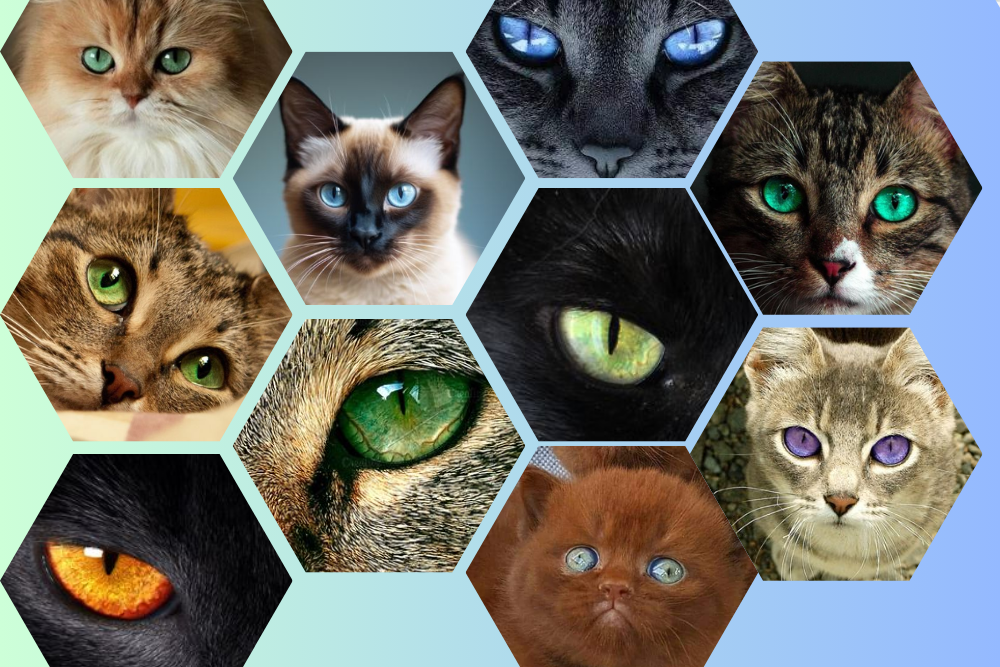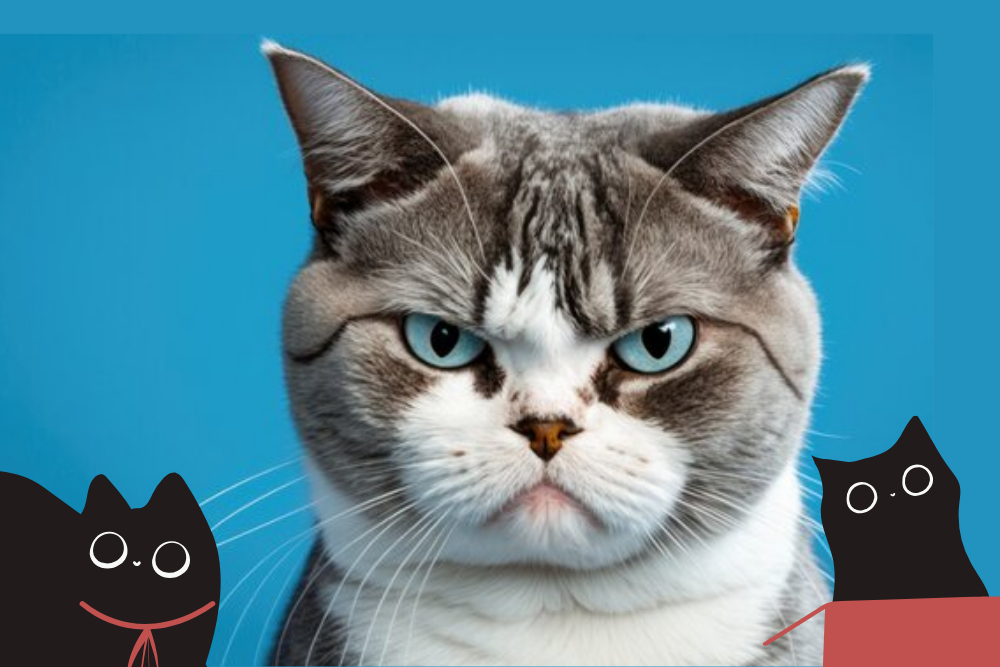Enjoy looking into your cat’s eyes! Have you ever wondered if your cat’s eyes have a rare color? Cats have more eye colors than dogs do. Each color tells a story about your cat’s origin and what makes them special. Let’s explore the amazing world of cat eye colors together! Each hue, from piercing blues to mesmerizing greens, tells a story of genetic inheritance, breed history, and individual personality.
Join us as we journey through the enchanting world of cat eye colors, celebrating the diversity and uniqueness found across different breeds. In “Eyes of the Feline World: Celebrating Cat Eye Colors Across Different Breeds,” we’ll explore the spectrum of colors that adorn the eyes of our beloved feline companions, uncovering the secrets and wonders hidden within each mesmerizing gaze.
What is the Rarest Cat Eye Color?
The rarest cat eye color is heterochromia, where each eye is a different color. This unique trait is especially uncommon in cats but can be found in breeds such as the Turkish Angora and Japanese Bobtail.

Heterochromia adds a captivating touch of individuality to a cat’s appearance, making them stand out from the crowd. Whether one eye is blue and the other is green, yellow and gold, cats with heterochromia often garner attention for their striking and unique eyes.
Rarity:
- Cats with yellow/orange eyes are the most common, representing an estimated 50-60% of the population.
- Second, cats with green eyes are estimated to represent 10-15%, while blue-eyed cats represent approximately 3-5% of the population.
- Finally, cats with two different eye colors, or heterochromia, represent less than 1% of the cat population.
While heterochromia can be genetic, it can also be acquired due to injury, illness, or other factors. Regardless of the cause, cats with heterochromia are truly one-of-a-kind and are admired for their exceptional beauty.
Facts About Cat Eye Colors
Cat eye colors are not only visually stunning but also provide insight into genetics, health, and the fascinating world of feline biology. Here are some detailed facts about cat eye colors:
- Genetic Influence: The color of a cat’s eyes is primarily determined by genetics. Multiple genes interact to produce various cat eye colors and patterns, leading to the wide array of hues observed in different cat breeds.
- Kitten Eye Color: Most kittens are born with blue eyes due to immature melanin production in the iris. As they grow older, the development of melanin leads to their permanent eye color, which may vary depending on genetics and other factors.
- Color-Pointed Breeds: Certain breeds, such as the Siamese, have color-pointed patterns where the eyes are a striking blue. This is due to a temperature-sensitive gene that causes melanin to be restricted to cooler areas of the body.
- Melanin Levels: The amount and distribution of melanin in the iris determine a cat’s eye color. More melanin results in darker colors like brown, while less melanin produces lighter colors such as blue or green.
- Health Indicators: Changes in eye color can sometimes indicate underlying health issues. Cloudiness or discoloration of the cat eye colors may signal problems such as cataracts, glaucoma, or other ocular conditions that require veterinary attention.
- Mood and Lighting: Cats’ pupils dilate and constrict in response to different lighting conditions and emotional states, which can affect the appearance of their eyes. This can make their eye color appear more intense or muted depending on the situation.
- Variations within Breeds: Even within the same breed, cat eye colors can vary widely. Factors such as genetics, lineage, and individual differences contribute to the unique eye colors seen in each cat.
- Breeds with Unique Eye Colors: Certain breeds are known for their distinct eye colors. For example, the Ragdoll breed is famous for its striking blue eyes, while Bengals often have gold or yellow eyes that complement their wild appearance.
- Stabilization of Eye Color: A cat’s eye color typically stabilizes by the time it’s three months old. However, some breeds, like the Siamese, may continue to develop their eye color until they’re around a year old.
- Heterochromia: Some cats exhibit heterochromia, where each eye is a different color. While rare, it adds a touch of uniqueness to the cat’s appearance and can be either genetic or acquired due to injury or illness.

Different Cat Breeds and Their Unique Eye Colors
Cats, with their mesmerizing eyes, come in a plethora of breeds, each showcasing distinct eye colors that contribute to their charm and allure. Let’s take a closer look at various cat breeds and their captivating eye colors:
Cats with Blue Eyes
Siamese Cats

Siamese cats, originating from Thailand, are renowned for their colorpoint coats and vivid blue eyes. Their striking appearance has captivated cat lovers for centuries. Siamese cats are also known for their vocal personalities, often engaging in conversations with their owners. Interestingly, they were historically known for their cross-eyed appearance, which is now less common due to selective breeding practices.
Ragdoll Cats
Originating from California in the 1960s, Ragdolls are large, fluffy cats with striking blue eyes ranging from pale to deep sapphire. This breed is known for its gentle and docile nature, earning them the nickname “puppy cats” for their tendency to follow their owners around the house. Ragdolls are also highly affectionate and enjoy being held and cuddled.
Balinese Cats
A long-haired variant of the Siamese breed, Balinese cats inherit the striking blue eyes of their ancestors. They are affectionate and intelligent companions with a hypoallergenic coat, making them suitable for households with allergies. Balinese cats are also known for their graceful movements and social personalities, often forming strong bonds with their human families.
Birman Cats
Also known as the “Sacred Cat of Burma,” Birmans have deep sapphire-blue eyes that are truly captivating. Legend has it that their eyes were a gift from a blue-eyed goddess, adding to their mystique. Birmans are gentle and affectionate cats, known for their loving nature and desire to be close to their human companions.
Himalayan Cats
With a Persian body and Siamese colorpoints, Himalayans possess mesmerizing blue eyes that complement their luxurious coat. These cats are known for their calm and laid-back demeanor, making them excellent companions for families and individuals alike. Himalayans are also intelligent and enjoy interactive playtime with their owners.
Tonkinese Cats
While Tonkinese cats can have various eye colors, they are often recognized for their aqua-colored eyes, inherited from their Siamese and Burmese lineage. This breed is known for its playful and affectionate nature, often engaging in games of fetch and following their owners from room to room. Tonkinese cats thrive on attention and enjoy being involved in all aspects of family life.
Are White Cats with Blue Eyes Deaf?
While not all white cats with blue eyes are deaf, a significant percentage may experience hearing loss due to a lack of pigment in the inner ear. Approximately 65-85% of all-white cats with two blue eyes are deaf, while 40% of white cats with one blue eye may experience hearing impairment. This condition, known as congenital deafness, is more prevalent in cats with blue eyes because the gene responsible for blue eyes is often linked to deafness.
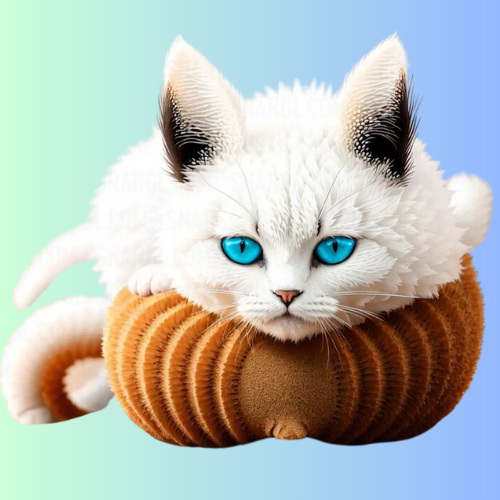
Cats with Yellow Eyes
Bombay Cats
Resembling miniature panthers, Bombay cats have striking yellow eyes that complement their sleek black coats. This breed is known for its affectionate and social nature, often forming strong bonds with their human families. Bombay cats are also playful and enjoy interactive toys and games.
Burmese Cats
With sleek sable coats and bright yellow eyes, Burmese cats are outgoing and playful companions, revered as sacred cats in ancient Burma. They are known for their dog-like behavior, often greeting their owners at the door and following them around the house. Burmese cats are also highly sociable and get along well with children and other pets.
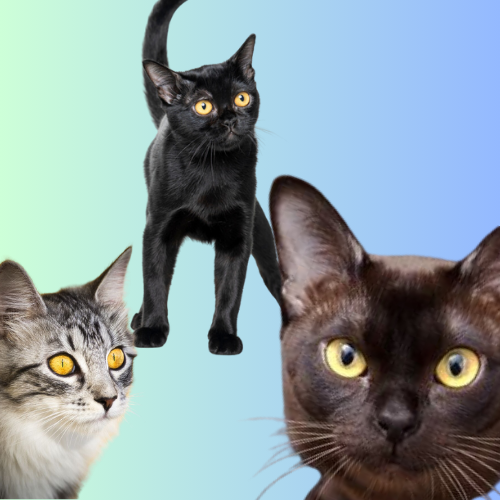
American Shorthair Cats
Yellow eyes are a common feature among American Shorthairs, adding to their classic appearance and friendly demeanor. This breed is known for its adaptability and easygoing nature, making them popular choices for families and individuals alike. American Shorthairs are also excellent hunters and enjoy chasing toys and exploring their surroundings.
Maine Coon Cats
Known for their large size and tufted ears, Maine Coons often boast yellow eyes that complement their rugged appearance. Despite their imposing size, Maine Coons are gentle giants known for their affectionate nature and playful antics. They are often described as “gentle giants” due to their friendly disposition and love of human company.
Cats with Hazel Eyes
American Shorthair Cats
Hazel eyes can be found in American Shorthairs, adding to their versatile appearance and charming personality. American Shorthairs are known for their adaptability and make excellent indoor companions. They are also highly intelligent and enjoy puzzle toys and interactive games.
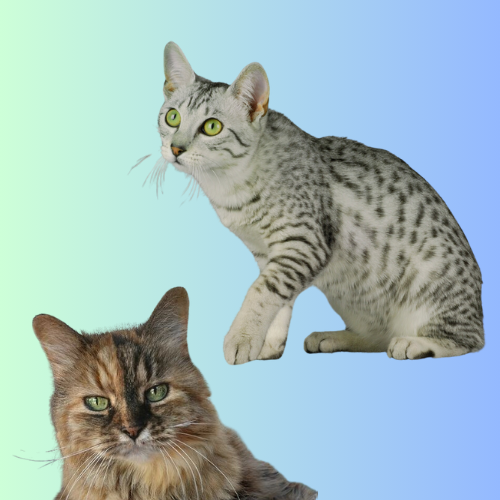
Maine Coon Cats
Maine Coons may also have hazel eyes, contributing to their majestic and rugged appearance. These cats are known for their loyalty and often form strong bonds with their human families. Maine Coons are also skilled hunters and enjoy outdoor adventures when safely supervised.
Cats with Different-Colored Eyes
Turkish Angora Cats
Known for their odd-eyed appearance, Turkish Angoras often have one blue eye and one amber or green eye. This striking feature adds to their unique charm and beauty. Turkish Angoras are intelligent and playful cats that enjoy interactive play and mental stimulation.
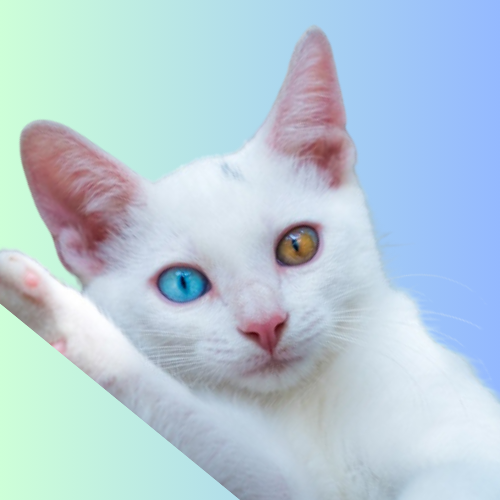
Khao Manee Cats
Famous for their heterochromatic eyes, Khao Manee cats often have one blue eye and one yellow eye, creating a mesmerizing effect. This breed is known for its affectionate and social nature, often forming strong bonds with their human companions. Khao Manee cats are also highly energetic and enjoy playing fetch and chasing toys.
Are Black Cat Eyes Possible?
Cats can indeed have eyes that appear almost entirely black, especially in low light. This is due to their pupils expanding to let in more light, along with the presence of a reflective layer behind the retina called the tapetum lucidum. This layer enhances their night vision and gives their eyes a characteristic glowing appearance, particularly in black cats. While the eyes may appear black, they actually reflect light differently, giving them their unique appearance.
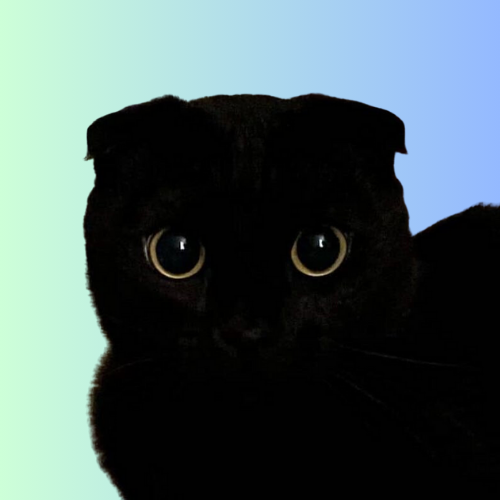
Cats with Green Eyes
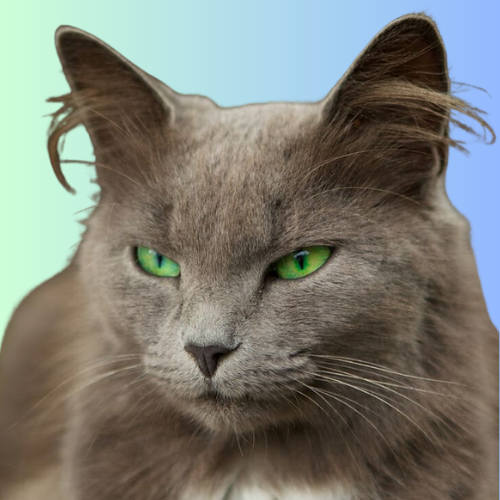
Russian Blue Cats
Famous for their luscious blue coat and striking green eyes, Russian Blue cats have a loving yet shy personality, with mixed breeds possibly displaying yellow-green eyes. Russian Blues are known for their reserved nature and may take some time to warm up to new people or situations. Once they do, however, they form deep bonds with their families and enjoy quiet companionship.
Egyptian Mau Cats
With unique “gooseberry green” eyes, Egyptian Maus are active and adventurous, boasting the ability to run up to 30 miles per hour. This breed is known for its loyalty and may form strong attachments to their human families. Egyptian Maus are also highly intelligent and enjoy interactive toys and games that stimulate their minds and bodies.
Somali Cats
Known for their vibrant green eyes and bushy fox-like tails, Somali cats are playful and affectionate companions. This breed is a long-haired variant of the Abyssinian and shares its intelligence and energy. Somali cats enjoy climbing and exploring their surroundings, making them ideal pets for active households.
Bengal Cats
Prized for their wild appearance, Bengals have striking green eyes that enhance their exotic allure. Bengals are highly active and may exhibit behaviors more commonly associated with their wild ancestors, such as climbing and hunting. Despite their energetic nature, Bengals are affectionate cats that form strong bonds with their human families.
American Shorthair Cats
Often overlooked for their green-eyed counterparts, American Shorthairs also exhibit this captivating eye color, adding to their classic charm. American Shorthairs are adaptable and enjoy both indoor and outdoor environments. They are also known for their independence and may be content to entertain themselves when their owners are busy.
Norwegian Forest Cats
Known for their thick, water-repellent coat and emerald green eyes, Norwegian Forest Cats reflect their forest origins. This breed is highly intelligent and enjoys problem-solving activities, such as puzzle toys and treat dispensers. Norwegian Forest Cats are also skilled climbers and may enjoy perching in high places to observe their surroundings.
Abyssinian Cats
Abyssinian cats boast captivating green eyes that complement their ticked coat pattern and playful personality. Abyssinians are known for their curious and active nature, often getting into mischief around the house. They are also highly social cats that enjoy interacting with their human families and may form strong bonds with specific individuals.
Cats with Orange Eyes
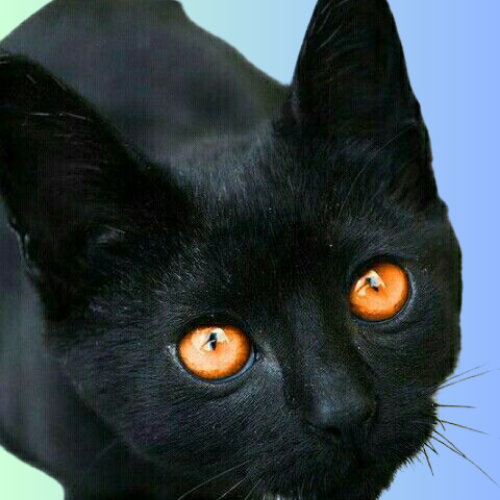
British Shorthair Cats
With round faces and plush coats, British Shorthairs often showcase orange eyes, resembling glowing lamps. British Shorthairs are known for their calm and easygoing demeanor, making them excellent companions for families with children or other pets. They are also affectionate cats that enjoy lounging on their owner’s lap.
Turkish Van Cats
Known for their striking amber eyes and love of water, Turkish Vans boast a softer hue that complements their unique breed traits. Turkish Vans are highly energetic and enjoy swimming and playing in water. They are also affectionate cats that form strong bonds with their human families and may follow them around the house.
Bombay Cats
Sleek and panther-like, Bombay cats may have orange or copper eyes, adding to their mystique and charm. This breed is known for its affectionate and social nature, often forming strong bonds with their human families. Bombay cats are also highly intelligent and enjoy interactive toys and games that challenge their minds.
Cats with Gold Eyes
Abyssinian Cats
In addition to their green eyes, Abyssinians can also have stunning golden eyes that match their warm coat colors. This striking combination adds to their exotic appearance and charm. Abyssinians are known for their playful and adventurous nature, often exploring every nook and cranny of their environment.
Burmese Cats
Affectionate and sleek, Burmese cats often display captivating gold eyes that complement their sable coats. Burmese cats are known for their loyalty and devotion to their human families. They are also highly affectionate cats that enjoy cuddling and snuggling with their owners.
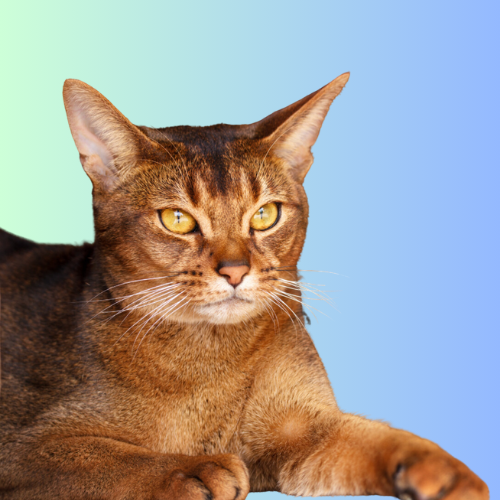
Bombay Cats
Alongside other eye colors, Bombay cats may possess mesmerizing golden eyes that enhance their elegance and allure. This breed is known for its sleek and shiny coat, which resembles that of a panther. Bombay cats are affectionate companions that enjoy being the center of attention.
Bengal Cats
Bengals may showcase gold eyes that intensify their wild appearance and enhance their exotic charm. This breed is known for its athleticism and agility, often engaging in acrobatic feats and climbing to high places. Bengals are also highly intelligent cats that enjoy interactive play and mental stimulation.
Cats with Brown Eyes
While solid brown eyes are not technically possible in cats, some breeds may display gold, copper, hazel, or amber hues that give the appearance of brown. These warm tones add depth and richness to the cat’s eyes, enhancing their overall beauty and appeal.
Cats with Copper Eyes
Copper eyes, although somewhat uncommon, can be seen in breeds like the British Shorthair, Scottish Fold, Maine Coon, and Persian, adding to their unique and captivating appearance. Copper eyes have a warm and inviting hue that complements the cat’s coat color, creating a striking contrast.
Factors That Affect the Color of Your Cat’s Eyes
The color of a cat’s eyes is influenced by various factors, each contributing to the unique appearance and charm of our feline friends. Here’s a detailed exploration of these factors:
Pigmentation
Pigmentation plays a crucial role in determining a cat’s eye color. The iris contains pigments that give the eyes their color. Two main types of pigments affect eye color:
Melanin: Responsible for creating darker colors such as brown or black. Cats with high melanin levels tend to have darker eye colors. Lipochrome: Produces lighter colors like yellow and green. Cats with more lipochrome in their iris tend to have lighter eye colors.
The combination and distribution of these pigments within the iris contribute to the final eye color of the cat.
Age
A kitten’s eye color can change as it grows older. At birth, most kittens have blue eyes because their eyes lack melanin. However, as they mature, melanin production increases, leading to a change in eye color. This transition is most noticeable in breeds that start with blue eyes, as the pigments gradually replace the initial blue hue.
Breed
Different cat breeds are known for their unique eye colors. For example:
Siamese cats: Renowned for their striking blue eyes, which are a result of a genetic mutation that causes temperature-sensitive melanin production. Turkish Van cats: Often have captivating amber or heterochromatic eyes, with one eye being a different color from the other.
Each breed has its own genetic predisposition to specific eye colors, adding to their distinct appearance.
Heterochromia
Heterochromia is a condition where a cat’s eyes are different colors. This can occur due to varying amounts of pigmentation or genetics. Complete heterochromia results in one eye being a completely different color from the other, adding a unique and striking element to the cat’s appearance.
Albinism and Color-Point Genes
Albinism and color-point genes also play a role in cat eye color:
Albinism: Cats with albinism lack melanin, resulting in pink or very light blue eyes. This condition gives their eyes a translucent appearance. Color-Point Patterns: Certain breeds, like Siamese cats, have color-point patterns where darker colors appear on their ears, face, paws, and tail. These patterns can also influence eye color, with darker areas often corresponding to darker eye colors.
Health Conditions
Changes in eye color or appearance can sometimes indicate underlying health issues. Cloudiness, discoloration, or inflammation of the eyes may be a sign of eye infections, diseases, or injuries. Regular monitoring of your cat’s eye health is essential, and any abnormalities should be evaluated by a veterinarian.
Stroma
The stroma, or outer layer of the iris, also affects eye color. It is clear-colored and can vary from almost colorless tones of blue to deep blues and even violets. The thickness and density of the stroma can influence how light is scattered within the iris, affecting the perceived eye color.
Final Thoughts
No matter the color of your cat’s eyes, each pair is a unique masterpiece that adds to the beauty and individuality of your feline friend. Whether they possess the rarest of hues or the most common shades, it’s the combination of their eye color, coat color, and personality that captures our hearts and makes us cherish them endlessly.
Whichever eye color your cat has, it’s perfect! It’s the combination of each cat’s eye color, coat color, and personality that makes us love them no matter what. If you have a cat with one of the rarer eye colors, we’d love to hear from you! Share your stories and experiences, and let’s continue to celebrate the beauty of our feline friends together.
